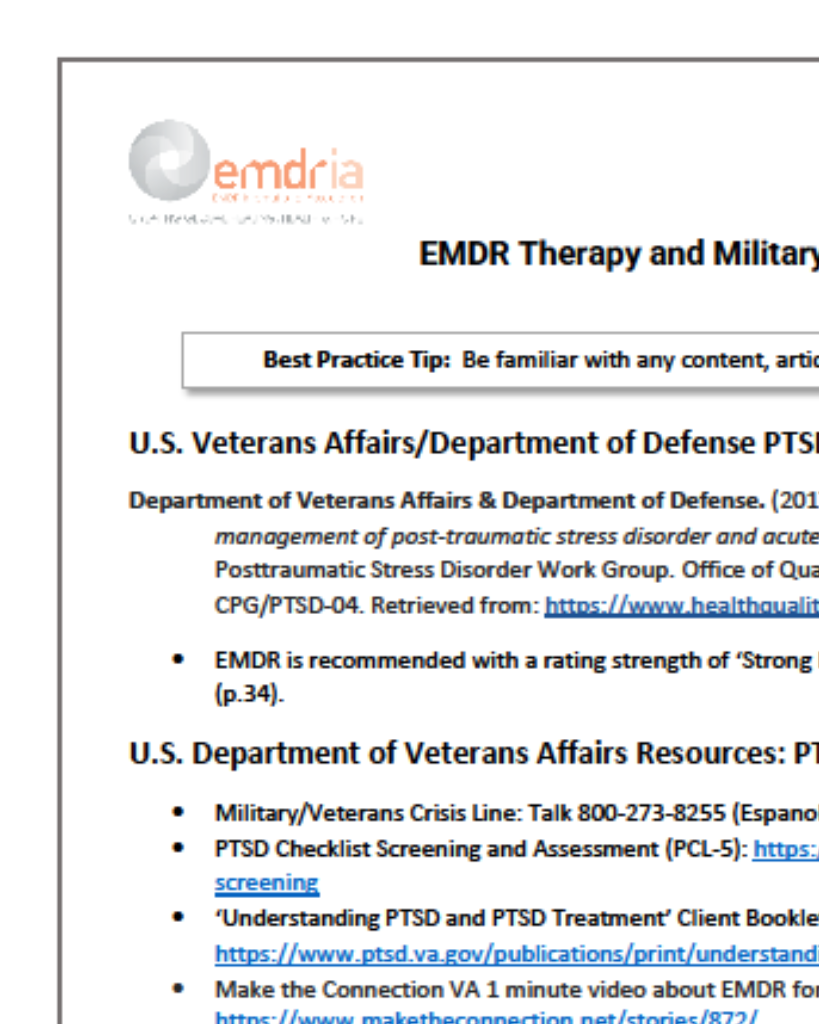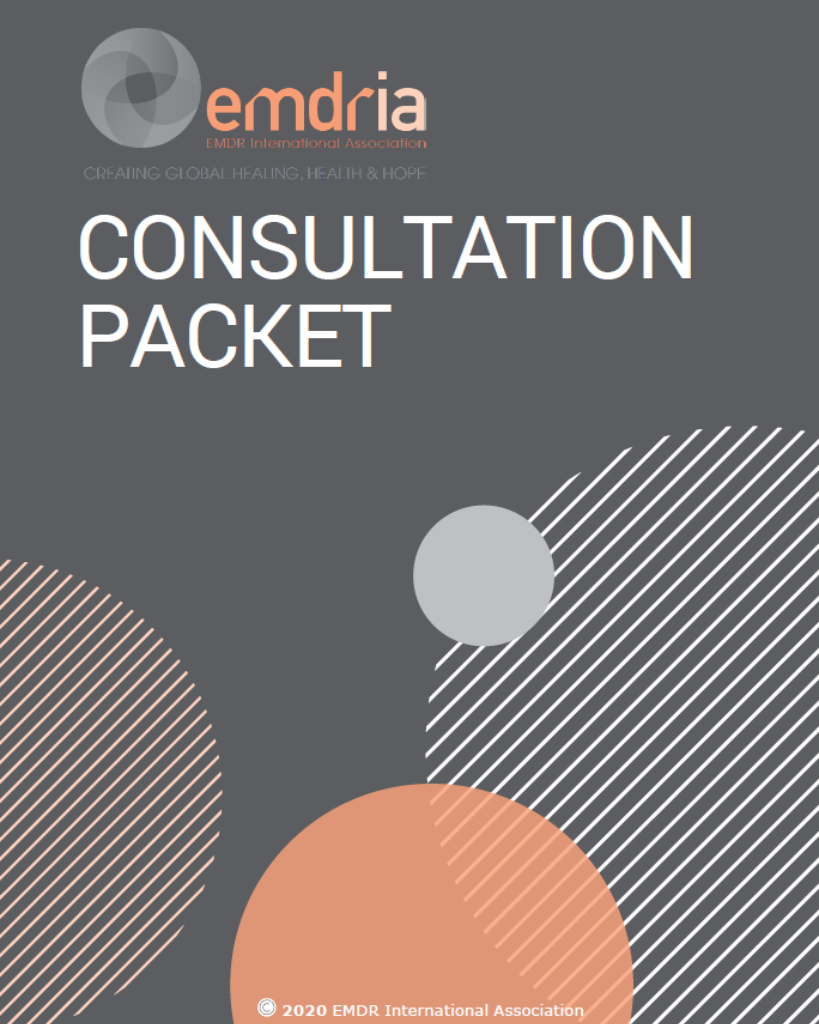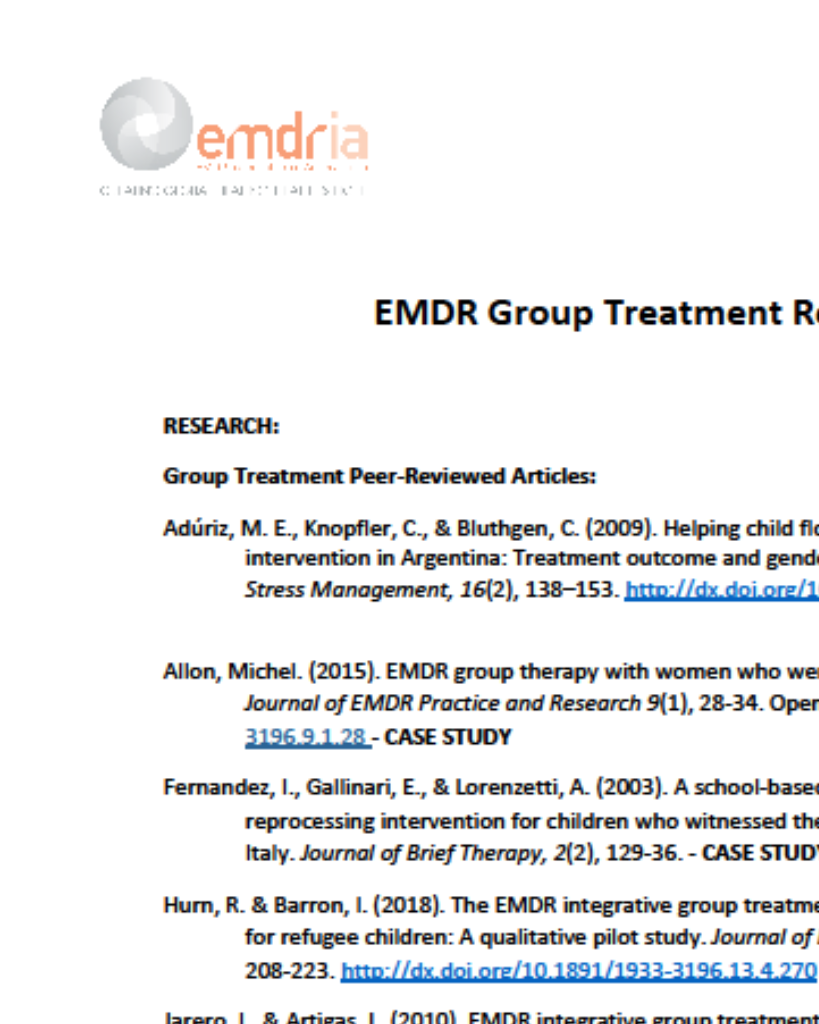The Effectiveness of Online EMDR 2.0 Group Protocol on Posttraumatic Stress Disorder Symptoms, Depression, Anxiety, and Stress in Individuals Who Have Experienced a Traffic Accident: A Preliminary Study
This is a preliminary study that aims to explore the role of EMDR 2.0 on groups by developing the EMDR 2.0 group protocol (EMDR 2.0 GP).
Article Abstract
“Introduction: As an innovative procedure, eye movement desensitization and reprocessing (EMDR) 2.0, which is based on standard EMDR, draws attention with its promising results. The adaptation of EMDR 2.0 to groups will be a significant contribution to the psychology literature. Considering the effectiveness of EMDR 2.0 on individual applications, this is a preliminary study that aims to explore the role of EMDR 2.0 on groups by developing the EMDR 2.0 group protocol (EMDR 2.0 GP).
Methods: In this pilot study, EMDR 2.0 GP is applied to a group of seven participants who had been exposed to a traffic incident. The role of EMDR 2.0 GP (three sessions; 3.5 hours in total) on posttraumatic stress disorder (PTSD) symptoms, depression, anxiety, and stress was measured. The Impact of Event Scale—Revised and the Depression-Anxiety-Stress Scale-21 (DASS-21) were used to assess these symptoms at pretreatment, one-week posttreatment, and one-month posttreatment.
Results: The participants (mean age = 47.14 ± 9.65) with a traffic accident experience (mean of the time elapsed = 88.57 ± 38.24 months) received EMDR 2.0 GP. Results showed that the EMDR 2.0 group had significantly lower depression (χ² [2, n = 7] = 9.364, p = .009, Kendall’s W = .668) and stress (χ² [2, n = 7] = 8.667, p = .013, Kendall’s W = .619) on the subscales of DASS-21 and lower intrusions (χ² [2, n = 7] = 6.333, p = .042, Kendall’s W = .452), avoidance (χ² [2, n = 7] = 7.280, p = .026, Kendall’s W = .520), and hyperarousal (χ² [2, n = 7]) = 10.800, p = .005, Kendall’s W = .771) at posttreatment.
Conclusion: The pilot study of EMDR 2.0 GP indicated that this newly developed protocol that was first applied to the group may be effective in reducing depression, stress, and PTSD symptoms among a nonclinical sample. This pilot study supports future randomized controlled EMDR GP applications.”
—Description from publisher
Article Access
Open Access
Yaşar, A. B., Kavakçı, Ö., Çiftçi, Z. Z., Tunca, G. A., Uygun, E., Gündoğmuş, İ., Kubilay, D., Aksöz, Y., Deveci, H., & Konuk, E. (2023). The Effectiveness of Online EMDR 2.0 Group Protocol on Posttraumatic Stress Disorder Symptoms, Depression, Anxiety, and Stress in Individuals Who Have Experienced a Traffic Accident: A Preliminary Study. Journal of EMDR Practice and Research, 17(3), 171–184. https://doi.org/10.1891/EMDR-2023-0003
About the Journal
The Journal of EMDR Practice and Research is a peer-reviewed publication devoted to integrative, state-of-the-art papers about Eye Movement Desensitization and Reprocessing. It is a broadly conceived interdisciplinary journal that stimulates and communicates research and theory about EMDR, and their application to clinical practice. The Journal of EMDR Practice and Research is the Official Publication of the EMDR International Association.
Date
September 1, 2023
Creator(s)
Alişan Burak Yaşar, Önder Kavakçı, Zeynep Zat Çiftçi
Contributor(s)
Görkem Alban Tunca, Ersin Uygun, İbrahim Gündoğmuş, Derin Kubilay, Yasemin Aksöz, Hande Deveci, Emre Konuk
Practice & Methods
Group, Telehealth
Extent
14 pages
Publisher
Springer Publishing Company
Rights
Copyright © 2023 EMDR International Association
APA Citation
Yaşar, A. B., Kavakçı, Ö., Çiftçi, Z. Z., Tunca, G. A., Uygun, E., Gündoğmuş, İ., Kubilay, D., Aksöz, Y., Deveci, H., & Konuk, E. (2023). The Effectiveness of Online EMDR 2.0 Group Protocol on Posttraumatic Stress Disorder Symptoms, Depression, Anxiety, and Stress in Individuals Who Have Experienced a Traffic Accident: A Preliminary Study. Journal of EMDR Practice and Research, 17(3), 171–184. https://doi.org/10.1891/EMDR-2023-0003
Series
17
Installment
3
Audience
EMDR Therapists
Language
English
Content Type
Article, Peer-Reviewed
Original Source
Journal of EMDR Practice and Research
Access Type
Open Access





